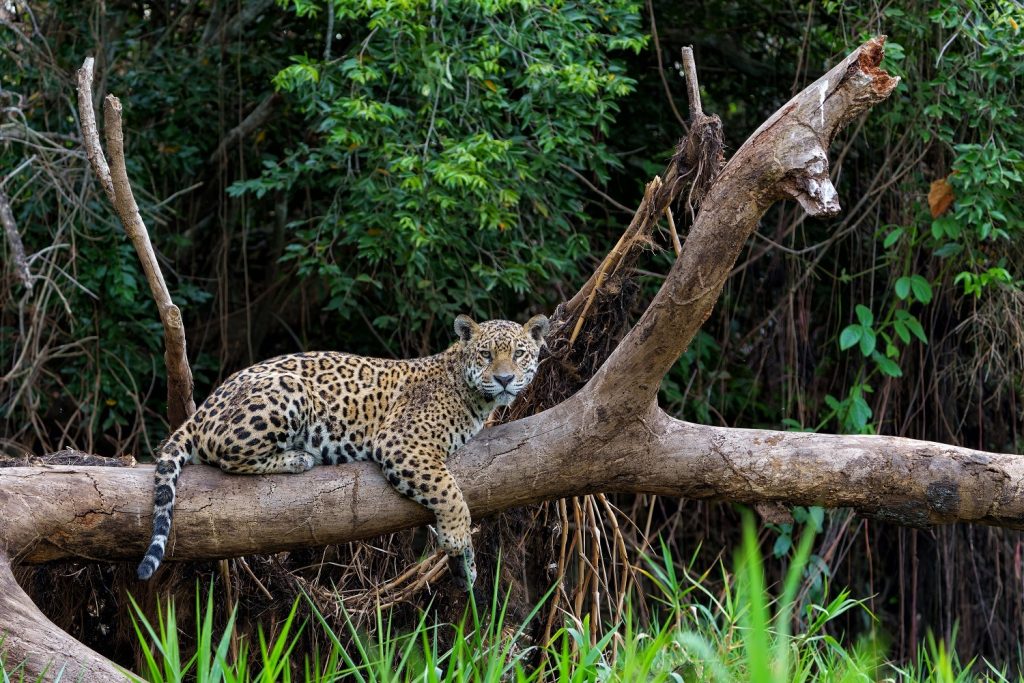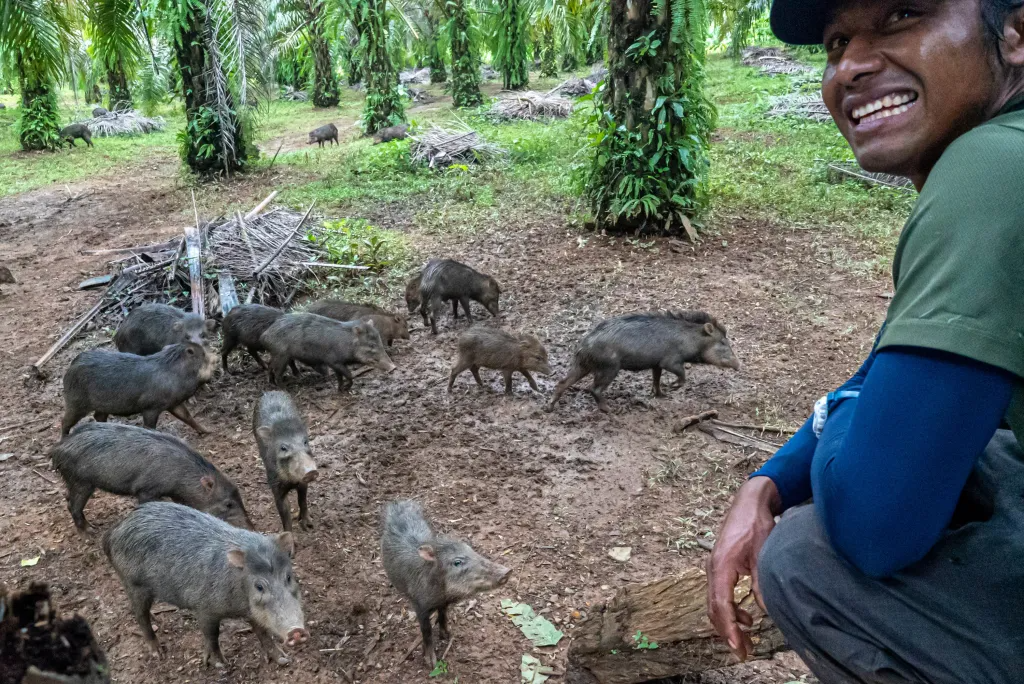This past year, Earth Rangers across Canada and the United States adopted over 200 jaguars! That’s a lot of cool cats! Thanks to kids like you, we’ve been able to support the International Conservation Fund of Canada (ICFC) and Osa Conservation. These organizations protect the tropical rainforest of Costa Rica’s beautiful Osa Peninsula, which is one of the most biodiverse regions on earth – and native habitat for many jaguars!

Restoring the Rainforest
There are many threats to the beautiful jungles that jaguars call home. These old growth forests are vulnerable to logging and human development. Osa Conservation’s “Ridge to Reef” project aims to restore animal habitat in these forests. They want to make it easier for jaguars and other animals to move from place to place within the jungle. To do that, they need to create and protect what are called wildlife corridors–like highways for animals, but with native plants and trees instead of concrete!
On the Osa peninsula, conservationists work hand in hand with thousands of members of the community to restore rainforest ecosystems. This past year alone, they worked together to restore over 140 hectares of degraded land. That’s about as big as 140 Major League Baseball diamonds!

Helping Baby Trees Grow
Diversity is the key to healthy rainforests. That means the Osa Conservation team planted 319 distinct species of native trees. Their scientists went on expeditions deep into the rainforest to collect seeds from rare species. To help these trees grow tall and strong, a team of over a dozen local communities looks after a network of tree nurseries.
A tree nursery is exactly what it sounds like: a place where baby trees receive the care they need to grow big and strong. Even the tallest tree begins life as a teeny-tiny seed. In an Osa Conservation tree nursery, a seed can sprout into a sapling and grow its first branches and leaves, all without natural threats, like strong winds and rains, or manmade threats, like logging.
In 2023, Osa Conservation planted 107,565 native trees! That’s more than they’ve planted in any year in history. The jaguars that live on the Osa Peninsula now have a richer, denser, and more biodiverse rainforest to live, play, and raise their cubs in.

Bringing Back Jaguars’ Favourite Snack
Jaguars aren’t the only animals that call the Osa Peninsula home. Jaguars are carnivores, which means they can only eat meat. They survive by hunting other animals, and their primary prey source—sort of like their favourite snack—is a hairy, pig-like creature called the white-lipped peccary.
Historically, mega-herds of white-lipped peccaries roamed southern Costa Rica, giving jaguars plenty of their favourite food to eat. But because of mining, poaching, and deforestation, which means chopping down trees, white-lipped peccaries became extirpated on the Osa Peninsula. This means that there were no white-lipped peccaries left on the entire peninsula!
In 2023, Osa Conservation launched a plan to bring the white-lipped peccary back to Piedras Blancas National Park, an area of protected rainforests and beaches on the southeastern Osa Pensinula. They worked with local communities and governments to get every detail of the plan just right. Starting in 2024, white-lipped peccaries will be back on the menu for jaguars on the Osa Peninsula!
But That’s Not All!
These are just a few of the incredible changes that you’ve made possible by adopting a jaguar! Check the Wild Wire blog next week for another update on everything that Osa Conservation has accomplished for jaguars. And if you haven’t already adopted a jaguar, there’s still time to purchase a wildlife adoption kit and support jaguar conservation — just click the “Shop” button in the site header or visit the adoption section in the Earth Rangers App!



Aurora
So so cute
I literally adopted one
2024 i did
Wow
My friend has one